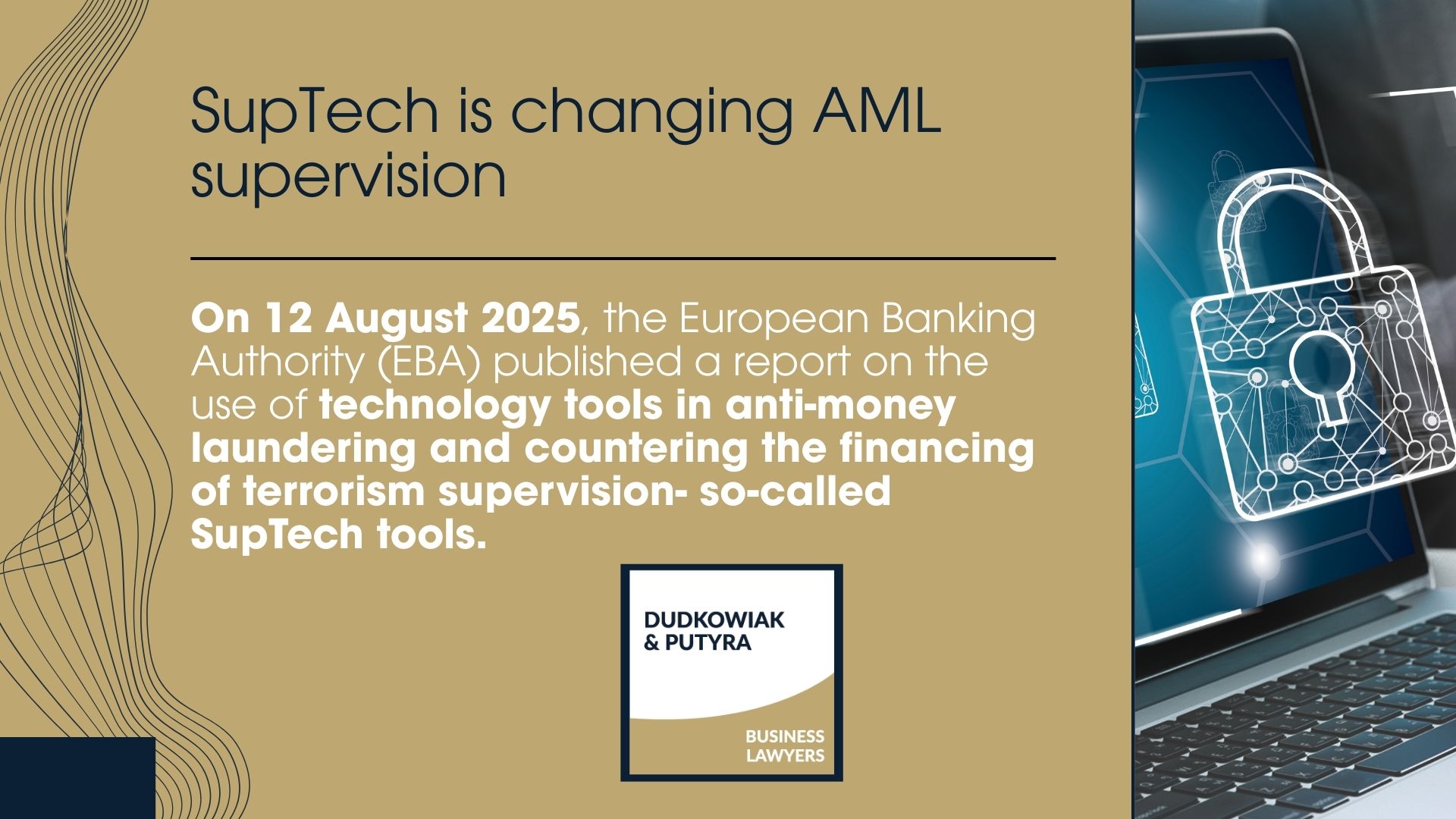SupTech is changing AML supervision: key takeaways from the EBA report
On 12 August 2025, the European Banking Authority (EBA) published a report on the use of technology tools in anti-money laundering and countering the financing of terrorism supervision- so-called SupTech tools.

The EBA report emphasizes that the rise of SupTech is happening in tandem with broader regulatory changes in the EU’s fight against financial crime. The new AML/CFT legislative package of 2024 (including the AML Regulation, the 6th AML Directive, and the AMLA Regulation) fundamentally transforms the EU’s approach, notably by establishing the Anti-Money Laundering Authority (AMLA).
The report concludes that innovative supervisory technology can make AML/CFT supervision significantly more effective, a finding that comes as the EU is overhauling its AML/CFT framework and establishing a new European Anti-Money Laundering Authority (AMLA). SupTech is now seen as a key driver of more efficient, data-driven and coordinated supervision under the new framework and the leadership of AMLA.
At the same time, the EBA notes that while SupTech adoption is still at an early stage, national supervisors are already observing promising benefits as well as encountering important challenges that need to be addressed.
From piloting to practice- the scale and pace of SupTech implementation in the EU
The EBA report provides the first comprehensive snapshot of SupTech usage in AML/CFT supervision across Europe. According to the survey of national competent authorities (NCAs), 31 authorities from 25 EU Member States (plus 3 from outside the EU) have worked on a total of 60 SupTech projects or tools to date. Most of these initiatives were launched within the last three years, reflecting a recent acceleration in the adoption of new technologies.
The range of technologies employed is broad- NCAs reported using 13 different types of technology (including artificial intelligence and machine learning, natural language processing, network analytics, blockchain, robotic process automation, cloud computing, and advanced data analytics).

What does SupTech mean for banks, fintechs, and CASPs?
Although the EBA report is directed at supervisory authorities, its findings carry important implications for the private sector- namely the obliged entities such as banks, payment institutions, fintech companies, crypto-asset service providers, and others subject to AML/CFT laws. Supervisors equipped with advanced SupTech tools will in turn raise the bar for compliance and oversight expectations. In anticipation of this shift, firms should prepare to adapt in several ways:
- Automation of compliance processes- as supervisors deploy algorithms to flag unusual patterns, banks and other entities should likewise modernise their own AML compliance systems. With SupTech enabling regulators to detect anomalies faster, firms must ensure they can react quickly to regulatory queries and alerts, and ideally use similar technology to proactively identify issues on their side.
- Standardisation and alignment- the advent of an EU-wide supervisory architecture implies that firms may need to conform to more uniform data formats and reporting standards. Greater standardisation of compliance processes and IT systems will likely be necessary to facilitate seamless interaction with pan-European supervisory platforms. Early alignment with emerging EU data requirements could ease future compliance burdens.
- Closer cooperation with regulators- SupTech will give authorities a more granular, near real-time window into institutions’ activities, moving supervision towards a more continuous monitoring model. Obliged entities should brace for a more Obligated entities must prepare for closer cooperation with supervisor authorities – for example, more frequent data submissions, participation in supervisory pilot programs, and generally a higher degree of transparency and engagement with regulators (such as testing tools in sandboxes).
The EBA report clearly shows that obligated institutions must prepare for more intensive, digital AML supervision. Our law firm supports clients in analyzing requirements, implementing solutions, and representing them before supervisory authorities. Contact us to ensure your organization’s compliance with the new standards.


